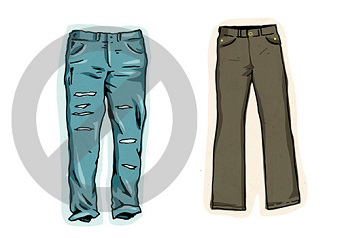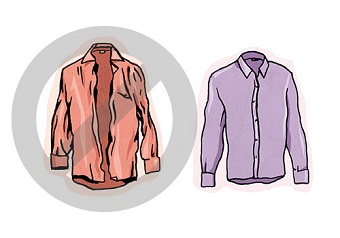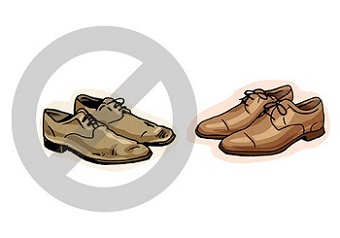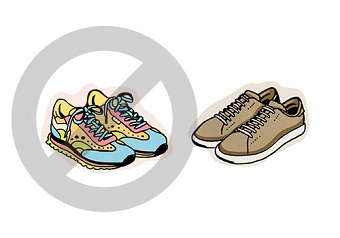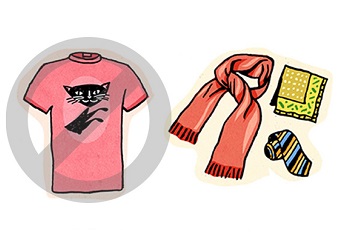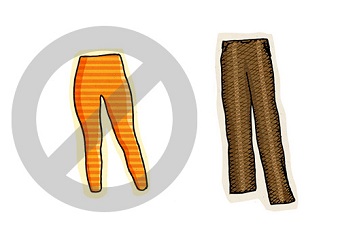If you’ve been in the working world for a while, you likely have a good grasp on what is acceptable attire in business environments. However, in the past decade, standards have shifted toward an every-day-is-casual-Friday mode that allows for more comfort and self-expression. The evolution is partially due to norms in technology startup culture that attracted younger workers and often placed lifestyle above formality. The soft benefit of not having to wear a suit was a powerful employee magnet, especially among millennials.
While the pandemic likely accelerated the relaxation of professional clothing, the trend was apparent before COVID-19 when executives at conservative institutions began to recognize the value in dressing to better reflect their clients, who were dressing informally. (Consider Dennis Green’s 2016 article in Business Insider, which noted that “JPMorgan just relaxed its office dress code in a huge way,” or Jena McGregor’s 2015 Washington Post piece: “Companies Ease Up a Bit on Worker Dress Codes.”) According to Liz Dunn, founder of retail consultancy Talmage Advisors, “The loosening of dress codes is related, at its core, to changing consumer impressions of what a professional person looks like.”
So, what is considered a professional appearance for business? What is acceptable to a wide audience according to today’s standards? “Most appearance is based on a sense that someone took the time and effort to project an image of confidence and ease with oneself,” says New York-based James Aguiar, vice president, Fashion/creative director at Modern Luxury, a national network of lifestyle publications. “That can reflect through clothing choices, grooming habits, hair, and make-up. Your look should not detract from your profession but enhance it and give those around you a sense of security that you are ‘in the right hands.’” Putting ever-evolving fashion trends aside, there are some modern fundamentals that determine a successful look, no matter whom you are meeting.
Find a fantastic fit
Whether you opt for a T-shirt and blazer with jeans or a more formal suit, the proper fit can make the difference between a sloppy impression and a put-together one. Aguiar says, “Tailoring and fit is 100% everything when it comes to how you look and feel. Tailoring is the first step to creating a uniquely personal sense of style.” Jeff Damon, a celebrity stylist and wardrobe consultant at Neiman Marcus, agrees. “A tailored fit is always in style. It is essential if you want to be taken seriously.” Damon explains that although current trends are leaning toward oversized pieces for both men and women, it’s likely better to not adopt this fad upon first meeting with a client. “A so-so first impression can make them doubt your qualifications,” he says.
So, what characterizes the right fit? Andrea Lauer, a costume designer and founder of Risen Division, a New York-based couture workwear line, emphasizes that a tailored fit doesn’t always mean slim-fitting. “It just means well-fitting,” she says. “Know your body. Know proportions. Pay attention to the way things hang, where things land on your shoulders and how the collar frames your face.” For men’s dress shirts, Lauer uses the “two-finger test,” often used by tailors, to measure collars. She says, “If you can fit more than two fingers between the top button and the neck, then it is too big!” She also says that the sleeve hem should pass the wrist bone or go longer to show a cuff in a jacket.
When it comes to trousers, the right pant break will depend on the cut of the pants and your personal proportions. “A nice break will elongate the leg and give a crispness to your look,” says Lauer. She recommends a nice ankle-length trouser for her female professional clients, and she cautions against skirt hemlines that are too short. “Women, don’t wear skirts too short in professional settings. It’s only going to be uncomfortable for you throughout the day and distracting to other people.”
Part of finding the right fit also includes investing in the right undergarments that provide coverage and support. Men should not wear baggy cotton boxer shorts with a suit and instead should wear a boxer brief. “Nobody wants to see an underwear line, and that goes for men, too,” says Lauer.
Keep it classic
As trends come and go, some wardrobe staples never go out of style. These include a great sport coat, crisp dark jeans, a perfectly fit shirt, and a solid go-to suit or dress. “Men are slowly coming back to wearing an occasional tie and a suit, but the workplace is currently dominated by casual looks with a sport coat and a dark, non-distressed, clean jean with a polo or casual button-down,” says Damon who frequently advises top executives and celebrities on their wardrobe choices. He also recommends the same for women. “A casual sport coat and nice T-shirt or blouse with a clean jean is a great look.” These outfits can be worn with a dress shoe or a pristine pair of sneakers, but never a shoe you would wear to the gym.
Lauer urges men and women to make the investment in quality wardrobe basics. A well-fitted classic tee is a must. “Make sure that it’s made out of a great material that doesn’t look like it’s Hanes,” she says. She also advocates for a great blazer or sport coat constructed with premium fabrics and distinctive details. Lastly, Lauer believes a reliable full outfit is a lifesaver when decisions are difficult. “Every professional needs to have, what I call, a ‘one and done’ classic outfit: A great suit or a fabulous dress that takes the guesswork out of what to wear.”
To play it safe, a narrow color palette of neutrals (white, black, gray, and navy) is a great base for personalization. Whether you choose to wear a colorful tie, patterned scarf, distinctive handbag or bold socks, these accessories are an opportunity to create a unique look. Tommie Battaglia, CEO/founder and lead designer of luxury fashion concierge company Gaetano, says a stylish pocket square and lapel pin are “a must in the suit style game.” For both men and women, a pop of color can get you noticed in the conservative world and give you credibility with creatives.
Regarding trendier items, such as crop tops, graphic T-shirts, and micro minis, Aguiar advises caution. “The takeaway is never to go to the extreme,” he says. Although self-expression is important, overly bold colors or patterns, profanity, and political statements are typically not recommended in the workplace. “Generally, graphic tees, tank tops, and shorts are best left out of the office environment. If you have to ask yourself whether this is going to offend anyone, it’s probably not the best look for you.”
Clean and pristine
It should go without saying that clean, pressed clothing and unblemished shoes are paramount when it comes to looking professional. “There is nothing worse than a beautiful suit or shirt that is wrinkled,” says Battaglia. A handheld steamer, lint brush, and good hangers are key tools to keeping your clothing looking sharp.
More no-no’s that fashion professionals agree on are ripped jeans and dirty shoes. “In the workplace, your denim should be clean and preferably dark (black or a deep indigo),” says Lauer, who argues strongly against denim with fake holes and distressing. Also, although more casual footwear such as sneakers have become a common modern look, it is never acceptable to wear soiled or scuffed shoes. Leather versions of classic sneaker styles are often a good bet. “Don’t ever wear an athletic shoe that looks comfortable,” says Lauer. “Find a great looking shoe that is comfortable.”
The same rules apply for hair, skin, and nails. Well-styled hair, a clean complexion, and manicured hands are all signs of someone who pays attention to details. “Today it comes down to the way an individual cares for themselves,” says Morgan Haile, a creative driver behind the nail brand Morgan Taylor Lacquers. She asserts that someone who has chipped nails or cracked cuticles is less likely to give off a positive first impression. This has become such an essential for men that Haile has seen an uptick in places designed to fill this void. “I’ve seen a new kind of men’s salons that cater to men for hair, nail, shaving, and even shoeshines.”
Remember to be yourself
Corporate dress codes of the past were more linear and based on a formality that has eroded over time. The new power suit has evolved into a reflection of contemporary life that involves more than time going to and from a traditional office. “As many of us are in a hybrid work situation, elements of our wardrobe can do the same,” says Aguiar. Today’s fashion rules have relaxed to accommodate the desire for comfort, transition, and individuality. Professionals can more easily lead on-the-go lifestyles that may include running from work to a PTA meeting or a cocktail mixer. There has never been more opportunity to flex your personality through your clothing and accessory choices. “You want to present yourself in a professional manner, but you also want to have a taste of you,” says Lauer. “The details help give you a persona. Clothes should empower you to be your higher self.”
Bottom line: Dressing for success in today’s workplace is a delicate balance between understanding your audience and being true to yourself. You want to be relatable, comfortable, respectable, and stylish while instilling confidence in your abilities to care for your clients. The good news is that smart clothing doesn’t have to be boring, and in the more relaxed modern workplace, your best professional outfits are likely the ones you’ve wanted to wear all along.
Share
More on Advanced Markets
Your Thriving
Practice
A destination to empower financial professionals to build, manage, and grow their practice
Get started with Global Atlantic
Take the next step with a company that can help elevate your business.
Need help?
Find all the contact information to submit and service your business.



